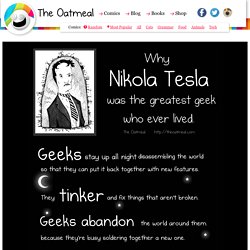

10 Words You Need to Stop Misspelling.
Why Are There 5,280 Feet in a Mile? Making Sense of Measurements. Why are there 5,280 feet in a mile, and why are nautical miles different from the statute miles we use on land? Why do we buy milk and gasoline by the gallon? Where does the abbreviation "lb" come from? Let's take a look at the origins of a few units of measure we use every day. The Mile The basic concept of the mile originated in Roman times. If the mile originated with 5,000 Roman feet, how did we end up with a mile that is 5,280 feet? The Nautical Mile So if the statute mile is the result of Roman influences and plowing oxen, where did the nautical mile get its start? Each nautical mile originally referred to one minute of arc along a meridian around the Earth. The Acre Like the mile, the acre owes its existence to the concept of the furlong.
The Foot As the name implies, scholars think that the foot was actually based on the length of the human foot. The Gallon The gallon we use for our liquids comes from the Roman word galeta, which meant "a pailful. VW Factory - Germany. Free Computers Video Lecture courses. Simple animation to explain complex principles. 1, aircraft radial engine 2, oval Regulation 3, sewing machines 4, Malta Cross movement - second hand movement used to control the clock 5, auto change file mechanism 6, auto constant velocity universal joint 6.gif 7, gun ammunition loading system 8 rotary engine - an internal combustion engine, the heat rather than the piston movement into rotary movement # Via World Of Technology. 1, inline engine - it's cylinders lined up side by side 2, V-type engine - cylinder arranged at an angle of two plane 3, boxer engine - cylinder engine arranged in two planes relative.

10 Futuristic Materials. Lifeboat Foundation Safeguarding Humanity Skip to content Switch to White Special Report 10 Futuristic Materials by Lifeboat Foundation Scientific Advisory Board member Michael Anissimov. 1.

Aerogel protecting crayons from a blowtorch. This tiny block of transparent aerogel is supporting a brick weighing 2.5 kg. Aerogel holds 15 entries in the Guinness Book of Records, more than any other material. Carbon nanotubes are long chains of carbon held together by the strongest bond in all chemistry, the sacred sp2 bond, even stronger than the sp3 bonds that hold together diamond. “Metamaterial” refers to any material that gains its properties from structure rather than composition. We’re starting to lay down thick layers of diamond in CVD machines, hinting towards a future of bulk diamond machinery. Diamonds may be strong, but aggregated diamond nanorods (what I call amorphous fullerene) are stronger.
Transparent alumina is three times stronger than steel and transparent. InShare28 Materials. A Fascinatingly Disturbing Thought&Video. Why Nikola Tesla was the greatest geek who ever lived. Additional notes from the author: If you want to learn more about Tesla, I highly recommend reading Tesla: Man Out of Time Also, this Badass of the week by Ben Thompson is what originally inspired me to write a comic about Tesla.

Ben's also got a book out which is packed full of awesome. There's an old movie from the 80s on Netflix Instant Queue right now about Tesla: The Secret of Nikola Tesla. It's corny and full of bad acting, but it paints a fairly accurate depiction of his life. The drunk history of Tesla is quite awesome, too. History.com has a great article about Edison and how his douchebaggery had a chokehold on American cinema.